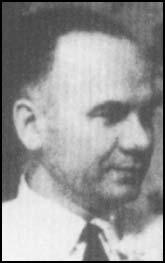Oleg Penkovsky

Oleg Penkovsky was born in Russia in 1919. He joined the Kiev Artillery School and became a lieutenant in 1939. A member of the Communist Party, he took part in the invasion of Finland and by the end of the Second World War had reached the rank of lieutenant-colonel.
In 1955 Penkovsky was appointed military attaché in Ankara. Later he was appointed to the Coordination of Scientific Research where he became deputy head of the foreign department. In April 1961 he began passing important information to his British contact in Moscow, Greville Wynne.
Penkovsky revealed information about Soviet missile developments, nuclear plans, locations of military headquarters and the identities of KGB officers. This included evidence that Nikita Khrushchev had been making false claims about the number of nuclear missiles in the Soviet Union. Over a period of 14 months Penkovsky passed photographs of 5,000 secret papers to the CIA and MI6.
Penkovsky, described by one intelligence officer as the "best spy in history", was considered so important that a meeting was arranged between him and Sir Dick White, head of MI6.
The Soviet Union had two double agents, William Whalen and Jack Dunlap, working in Washington. Eventually information was passed to the KGB that Penkovsky was spying for the West. On 20th October, 1962, Russian intelligence officers raided Penkovsky's apartment and discovered a Minnox camera that had been used to photograph secret documents.
Penkovsky was immediately arrested and it was not long before he gave the name of Greville Wynne as his British contact. A few days later Wynne was arrested at a trade fair in Budapest, Hungary.
After being convicted Wynne was sentenced to eight years' imprisonment and Penkovsky was sentenced to death. Oleg Penkovsky was executed on 16th May 1963.
Primary Sources
(1) Peter Wright, Spycatcher (1987)
Penkovsky was, at the time, the jewel in MI6's crown. He was a senior GRU officer who spied in place for MI6 and the CIA during 1961 and 1962, providing massive quantities of intelligence about Soviet military capabilities and intentions. It was hailed on both sides of the Atlantic as the most successful penetration of Soviet Intelligence since World War II. Penkovsky alerted the West to the presence of Soviet missiles in Cuba, and his information about the Soviet nuclear arsenal shaped the American approach to the subsequent Cuban missile crisis. He also provided the evidence for the identification of the Russian missiles in Cuba. But in late 1962 Penkovsky and a British businessman, Greville Wynne, who was his cutout to MI6, were both arrested by the KGB, and put on trial. Wynne was given a long prison term (although he was eventually exchanged for Gordon Lonsdale and the Krogers) and Penkovsky, apparently, was shot.
